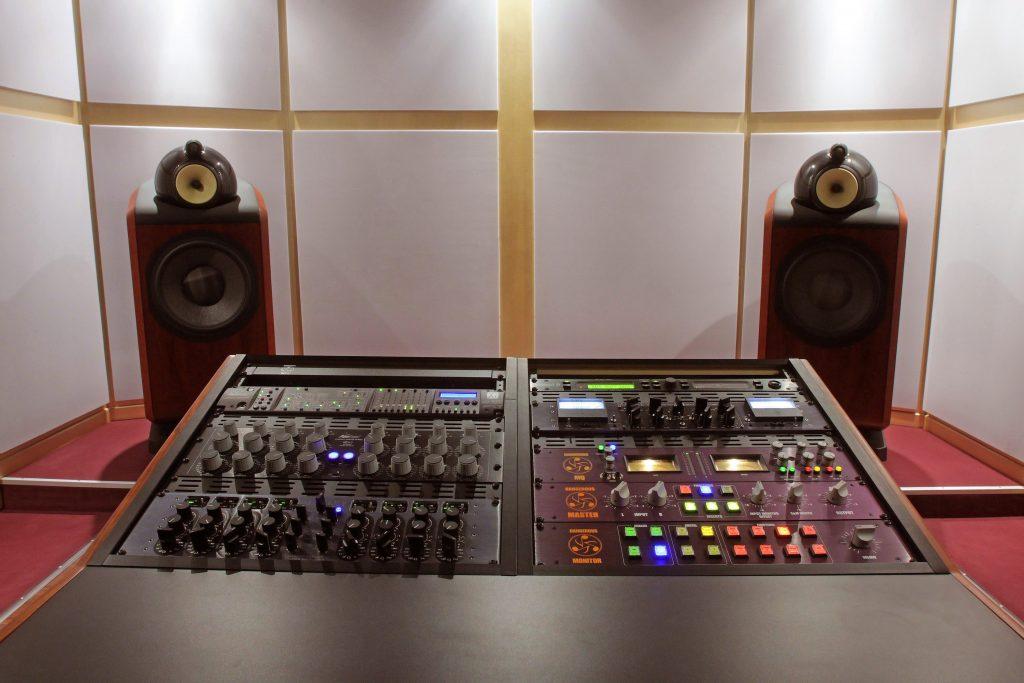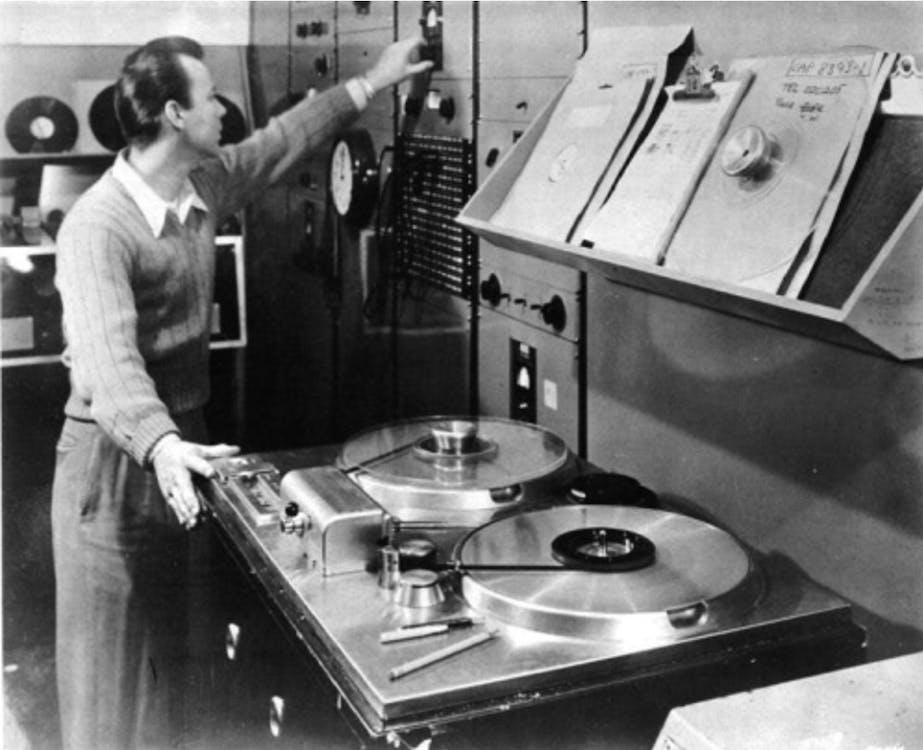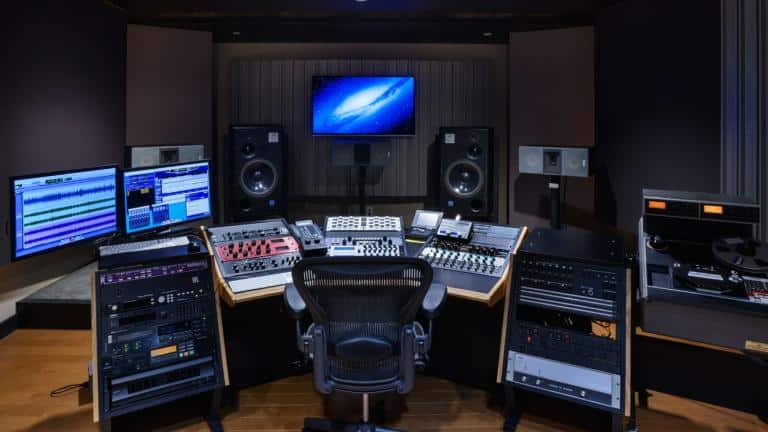Mixing and mastering are post-production processes that have been used in the music industry for decades. These processes aim to produce high-quality sound recordings that are balanced, clear, and pleasing to the ear.
Mixing and mastering are crucial stages of music production that have undergone significant changes since their inception. Mixing involves blending all the tracks of a song into a cohesive whole, while mastering refers to the process of fine-tuning the mix, making it sound clear, balanced, and polished.
Originally, mixing and mastering were done manually using analog equipment, but with the advent of digital audio workstations, these processes have become more accessible and efficient. Today, mixing and mastering are critical components of audio production, and a well-mastered track can make all the difference in the success of a song.

Credit: www.masteringbox.com
Early Methods Of Mixing
Mixing and mastering processes have come a long way since their early methods. Back then, recordings were done on wax cylinders and required physical manipulation of horns and tubes to adjust sound levels. Today, digital audio workstations allow for precise and efficient editing.
In the early days of recording music, mixing and mastering weren’t as easy or sophisticated as they are today. Before the advent of modern technology, music had to be mixed manually to balance the sounds and create a better listening experience. Let’s take a closer look at some of the early methods of mixing and how they have evolved over the years.
Manual Mixing Techniques
Manual mixing techniques are exactly what they sound like – mixing music by adjusting knobs and levers by hand. Back then, music was recorded on analog tape, which was then fed through a mixing desk to balance the levels of each instrument and vocal. The engineer had to use his ears to mix the music, listening carefully to each element to get the perfect balance. These manual mixing techniques took a lot of time, effort, and skill, and engineers would spend hours perfecting their mix.
Adding Effects
Another early method of mixing was adding effects. Effects such as reverb, delay, and compression were added to the mix to enhance the music and give it a more polished sound. However, this had to be done manually too, by using external machines such as tape echo or spring reverb. These effects were often added in real-time during the mix, which meant that engineers had to be quick on their feet and have a good ear for how the effects would impact the music.
Conclusion
Despite the limitations of early mixing and mastering techniques, recording artists and engineers still found ways to produce great music. Today, technology has made the process much easier and more accessible, but the principles of balancing levels and adding effects still apply. Understanding the history of mixing and mastering helps us appreciate the complexities of music production and the skill required to create a great sounding track.
Advancements In Mixing Technology
Mixing and mastering have come a long way throughout the history of music production. From analog consoles to digital audio workstations, advancements in mixing technology have enabled producers to achieve cleaner, more precise mixes with greater ease and efficiency.
Introduction Of Multitrack Recording
Multitrack recording was a major breakthrough in music production. Before its introduction, all instruments and vocals were recorded on a single track, making it difficult to adjust individual elements without affecting the entire recording. The introduction of multitrack recording in the mid-1950s allowed for separate recording of each instrument and vocal track, enabling engineers to adjust the levels of each track independently. This opened up a whole new world of possibilities in mixing and mastering.
Digital Audio Workstations (daws)
The introduction of Digital Audio Workstations (DAWs) revolutionized the way music was mixed and mastered. DAWs allowed engineers to access more sophisticated mixing tools like EQs, compressors, and reverb plugins, making it easier to achieve high-quality audio. DAWs also brought the benefits of non-destructive editing, enabling engineers to make edits without altering the original audio file. The widespread use of DAWs in modern music production has made it easier for producers to achieve professional sound quality without the need for costly studio equipment. Advancements in mixing technology have significantly improved the quality of music production. In the early days of music production, mastering was done using analog equipment, such as tape machines, compressors, and EQs. However, modern technology has brought digital mixing and mastering tools that are much more precise and efficient. Today’s digital mixing technology allows engineers to precisely control the details of a recording, such as panning, volume, and tone. Advancements in mixing software have made it easier for audio engineers to create complex mixes with an increased level of automation and accuracy. In conclusion, the history of mixing and mastering has seen significant advancements in technology. From multitrack recording to digital audio workstations, audio engineers now have access to a wide range of powerful tools to create high-quality sound. As technology continues to improve, we can expect even more exciting developments in the future of music production.
Influence Of Mastering On Music
The history of mixing and mastering in music has had a significant influence on the art form. Mastering is the final step in the production process, enhancing audio quality and increasing loudness, resulting in a polished, professional track. Mix engineers and mastering engineers play a crucial role in the creation of a music masterpiece.
Music has come a long way since the early days of vinyl records and magnetic tapes. With the advent of digital technology and the rise of streaming platforms, the art of music production has evolved significantly. One crucial aspect of this evolution is the role of mixing and mastering. Mixing engineers are responsible for balancing and blending the individual tracks of a song, while mastering engineers take the final mix and polish it to enhance its overall sound quality. In this blog post, we will explore the significance of mastering and its impact on music.
Role Of Mastering Engineers
Mastering is the final step in the music production process before its release. The primary role of mastering engineers is to ensure that the final mix is optimized for the intended delivery format. This could be for radio play, digital downloads, CDs, or vinyl records. Mastering also involves equalization, compression, limiting, and stereo enhancement to create a cohesive sound across an album. The mastering engineer also ensures that the songs on an album have consistent sound quality and volume levels. The mastering process is usually done in specialized rooms with superior acoustics and high-end equipment to make the best possible final product.
Impact On Sound Quality
Mastering plays a crucial role in the overall sound quality of a song. The final mix, when passed through the mastering stage, helps the sound engineer to tighten up the little flaws and errors that may have gone unnoticed in the mix. Mastering can enhance the tonal balance of a recording, making it sound more polished, clear, and professional. It can add warmth, depth, and space to a mix that could have previously sounded flat and lifeless. Poor mastering can result in a distorted, compressed, or muffled sound. Mastering also plays a vital role in setting the overall loudness of a song, making it sound competitive with other tracks on playlists or radio. In conclusion, mastering enhances the overall sound quality of a song, making it sound professional, polished, and competitive with other songs in the industry. The role of the mastering engineer is crucial in the creation of a cohesive sound across an album, setting the tone and feel of the songs. The evolution of mastering technology and techniques has made it possible for the delivery of better and more sophisticated music products, contributing to the unending progress of the music industry.

Credit: www.sonarworks.com
The Evolution Of Mastering Techniques
Mastering techniques have come a long way since the first commercial recording studios in the early 1900s. Previously, mixing and mastering occurred simultaneously, but as technology and industry demand evolved, mastering techniques have become a crucial step in achieving professional sound quality.
Today, mastering tools and techniques incorporate digital technology that allows sound engineers to achieve even more control and precision than ever before.
Audio production has drastically evolved over the last few decades. One area that has seen significant changes is mastering. For a long time, mastering was done exclusively using analog equipment. However, with technological advancements, digital mastering has gained popularity. In this article, we will take a look at the history of mixing and mastering, with a particular focus on the evolution of mastering techniques.
Analog Vs Digital Mastering
Until the advent of digital technology, all mastering was done using analog equipment. Early analog mastering involved cutting a vinyl record directly from the master tape, which involved a lot of trial and error. Eventually, mastering engineers began using equalization and compression to fine-tune the sound further. However, it was a laborious process that required a lot of skill and experience. With the advent of digital technology and the introduction of digital audio workstations, digital mastering became more accessible. Digital mastering involves capturing an audio signal in a digital format, editing it using software, and then converting it back to an analog signal for distribution. The advantage of digital mastering is that it allows engineers to work with a much wider range of processing tools, making the process quicker and more efficient than analog mastering.
The Loudness War
The Loudness War refers to the practice of increasing the overall level of a recording to make it sound louder than its competitors. While this technique can make a recording stand out, it can be detrimental to the quality of the music. The practice of extreme loudness compression began in the 1990s and became more widespread with the rise of digital music distribution. The problem with this practice is that it eliminates the natural dynamics of the music, resulting in a compressed, distorted sound. Finally, in recent years, mastering engineers have become increasingly conscious of the detrimental effect of the Loudness War. They are now more likely to prioritize sound quality over loudness levels when mastering, resulting in better-sounding music. To conclude, the history of mixing and mastering has seen significant changes over the years. With the advent of digital technology, mastering has become more accessible and efficient for engineers. However, the Loudness War highlights the need for mastering engineers to prioritize sound quality over volume levels.
Modern Mixing Trends
Mixing and mastering have come a long way since its inception. The history of mixing and mastering shows us how modern mixing trends have evolved over time. From analog to digital, modern mixing is about using technology to produce a high-quality sound that listeners will love.
Mixing For Streaming Services
The advancement of technology has brought forth the emergence of new technologies. Every year, streaming platforms like Spotify, Apple Music, and Tidal continue to evolve. Audio engineers now need to be aware of the different formats and requirements of each platform. For instance, Spotify requires music to be uploaded in Ogg Vorbis format, while Apple Music prefers files in AAC format. Audio engineers must also keep in mind that mastering for streaming services require different techniques than mastering for CDs.
The Importance Of Headroom
Headroom refers to the difference between the loudest and softest parts of a mix. The audio levels should not max out, leaving a small amount of headroom. Leaving space allows for mastering engineers to maximize the audio loudness without causing distortion. Therefore, it is important to know how to balance the levels of different tracks before exporting the mix. In conclusion, modern mixing trends have brought forth new techniques and requirements that audio engineers need to understand. For instance, mixing for streaming services requires the knowledge of different audio formats and how to master for these different platforms. The importance of headroom cannot be overemphasized as it can significantly impact the quality of the final mix.
Future Of Mixing And Mastering
Mixing and mastering have come a long way over the years as technology continues to advance. With the evolution of digital processing, the future of mixing and mastering seems limitless, allowing for more precision and creativity in audio production.
Artificial Intelligence In Mixing And Mastering
Artificial Intelligence (AI) has taken over the world by storm, and the music industry is no exception. AI technology is being used to automate various functions in the music production process, including mixing and mastering. The use of AI algorithms can help in automating the process, reducing errors, and providing more accurate results. Machine learning algorithms are being used to analyze various elements of a mix and then make real-time adjustments based on the analysis. Moreover, AI can help in generating recommendations on how to improve the mix and provide insights to the mixing engineer on how to improve the sound quality. AI-based plug-ins and software are being created to help users with EQ, compression, reverb, and other effects. With time, AI will only become more sophisticated and capable of handling even more complex tasks.
New Techniques And Technologies
Mixing and mastering techniques have evolved significantly over time, and new technologies are emerging every day to help shape the future of the industry. One of the new techniques is immersive audio, which creates a three-dimensional sound field around the listener. This technique is being used in virtual and augmented reality experiences to provide a more realistic and immersive listening experience. Similarly, new technologies such as stem mastering and cloud-based mastering are allowing producers to work remotely and collaborate with others around the world. As technology continues to evolve, the future of mixing and mastering will undoubtedly involve even more advanced techniques and technologies.
Conclusion
As we can see, the future of mixing and mastering is expected to be increasingly dominated by technology. AI will continue to play a vital role in automating and optimizing various aspects of the process, while new techniques and technologies are emerging to help producers achieve their desired sound. It’s exciting to see where the industry is headed, and we can look forward to an even brighter future in the world of music production.

Credit: spatialmastering.co.uk
Frequently Asked Questions For History Of Mixing And Mastering
When Did Mixing And Mastering Start?
Mixing and mastering have been around since the beginning of recorded music. The first known commercial recordings in the late 1800s were mixed and mastered before release. The techniques and technology used have evolved over time, but the concept remains the same.
What Is The Truth About Mixing And Mastering?
Mixing and mastering are two distinct processes in the music production. Mixing involves blending different audio tracks together to create a cohesive sound, while mastering focuses on fine-tuning the overall sound quality for distribution. Both are crucial steps in creating a professional-sounding track.
When Did Digital Mastering Start?
Digital mastering started in the late 1980s as music production moved towards digital technology. It allowed audio engineers to manipulate sound recordings more precisely and achieve better sound quality in the final product.
Does Mixing Or Mastering Come First?
Mixing should be done before mastering. During mixing, the different tracks of a recording are balanced, adjusted and processed to create a cohesive sound. Mastering is the final step where an expert applies post-production techniques to ensure consistent levels and tonal balance across all tracks.
Mixing is the foundation, and mastering adds the final sparkle.
Conclusion
Mixing and mastering have come a long way since the early days of music production. As technology has evolved, so have the techniques used to create high-quality recordings that meet market standards. The history of mixing and mastering is a testament to human ingenuity and persistence in the pursuit of excellence.
As we continue to push boundaries and experiment with new approaches, we can expect even more exciting developments in this field. Whether in music or any other industry, the journey of progress is never-ending.